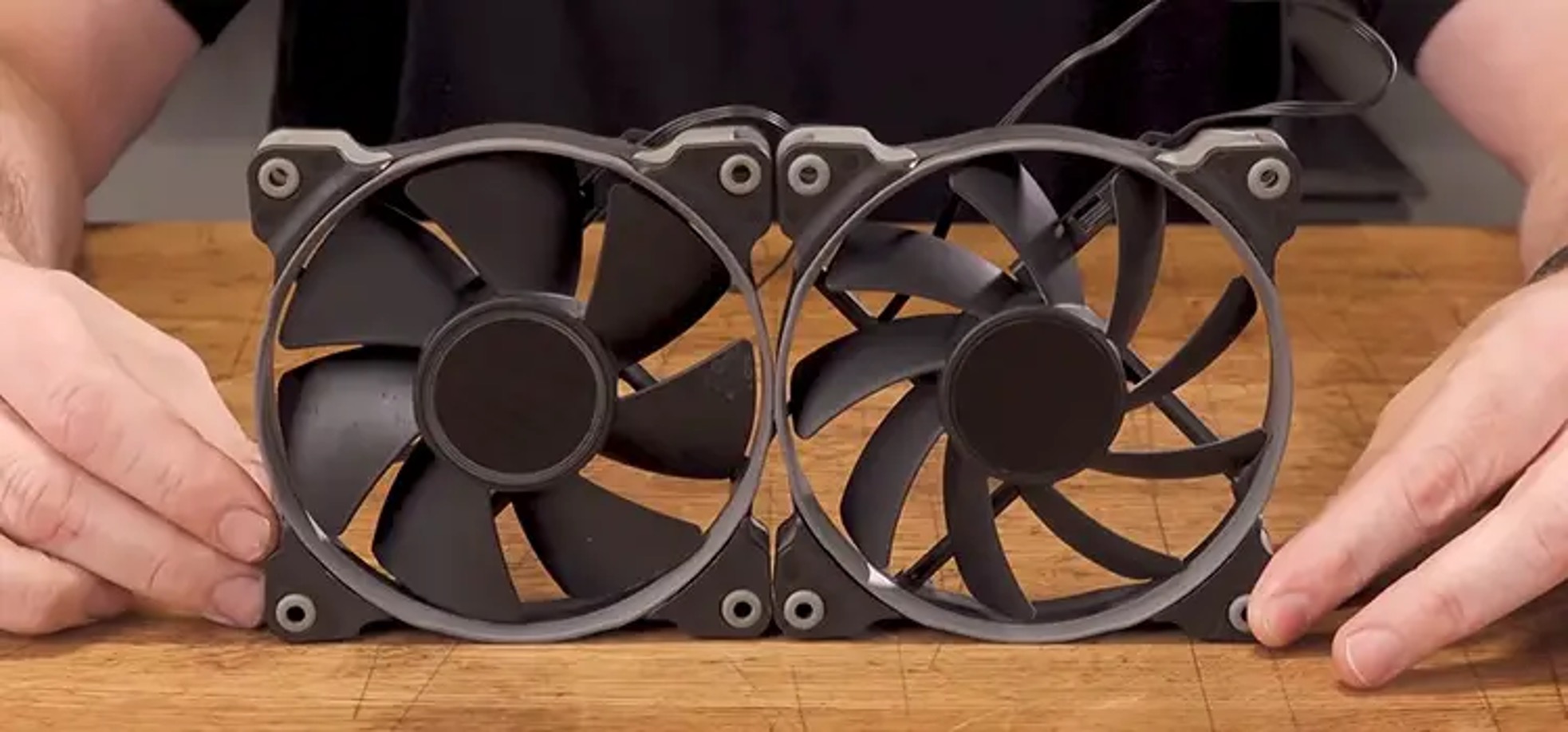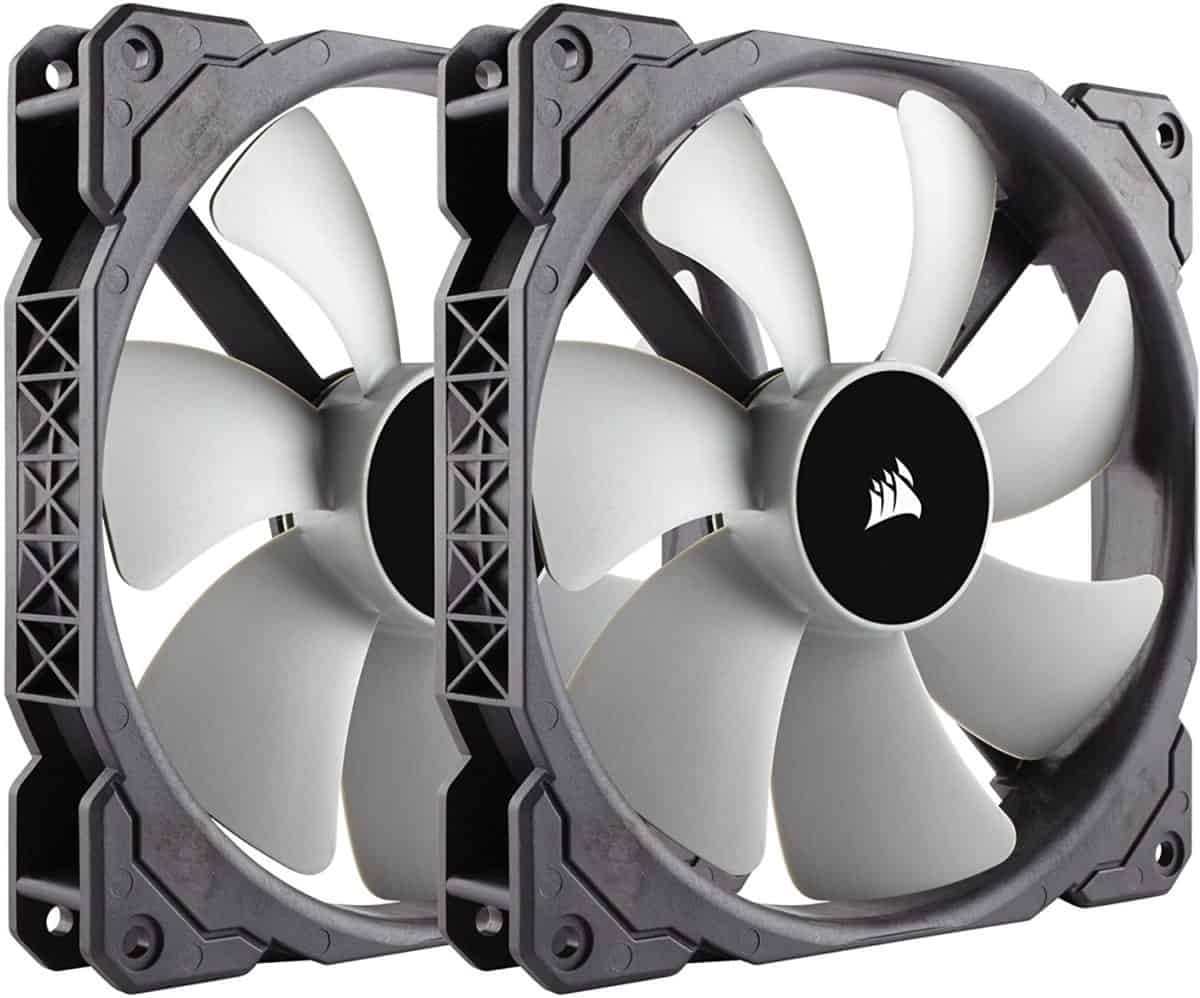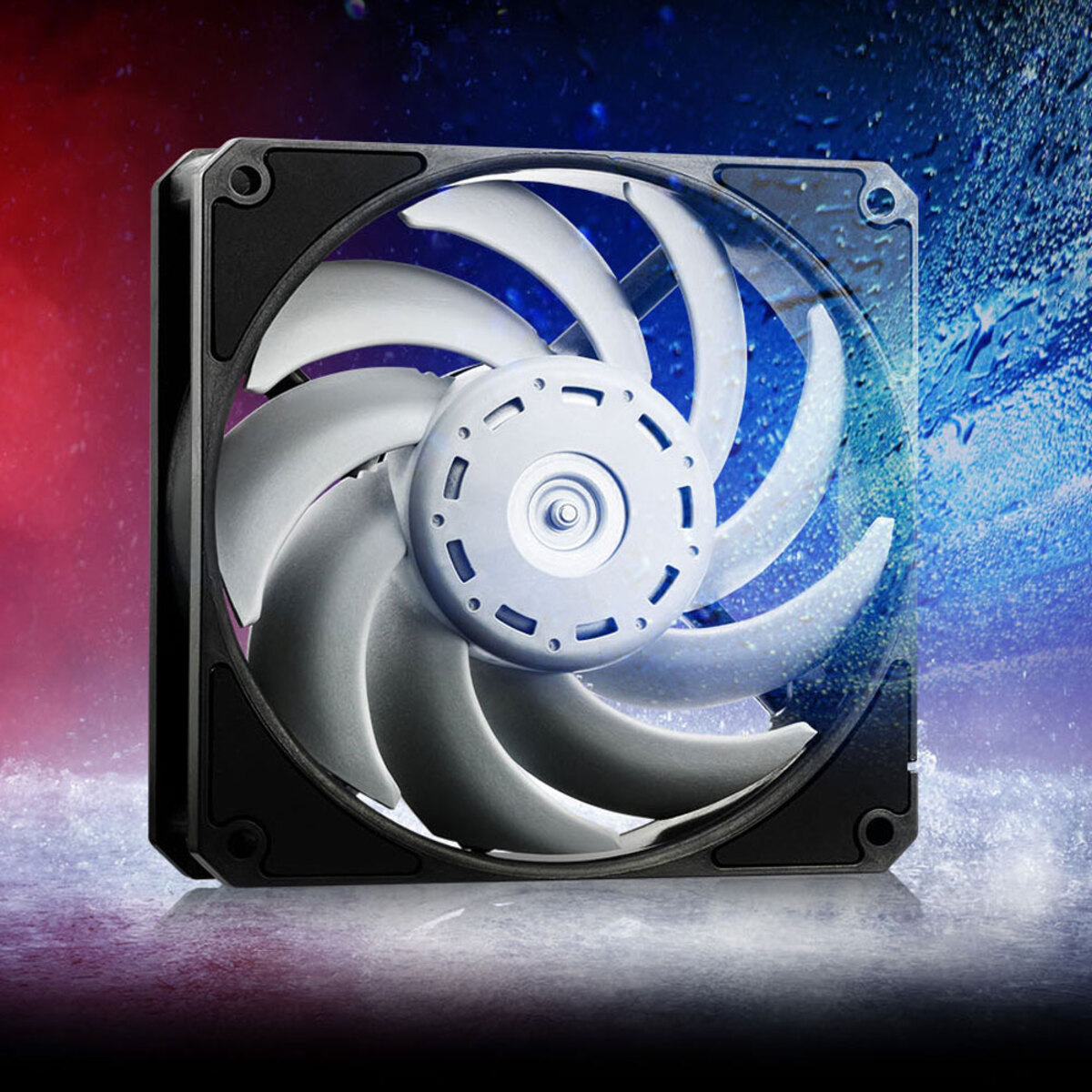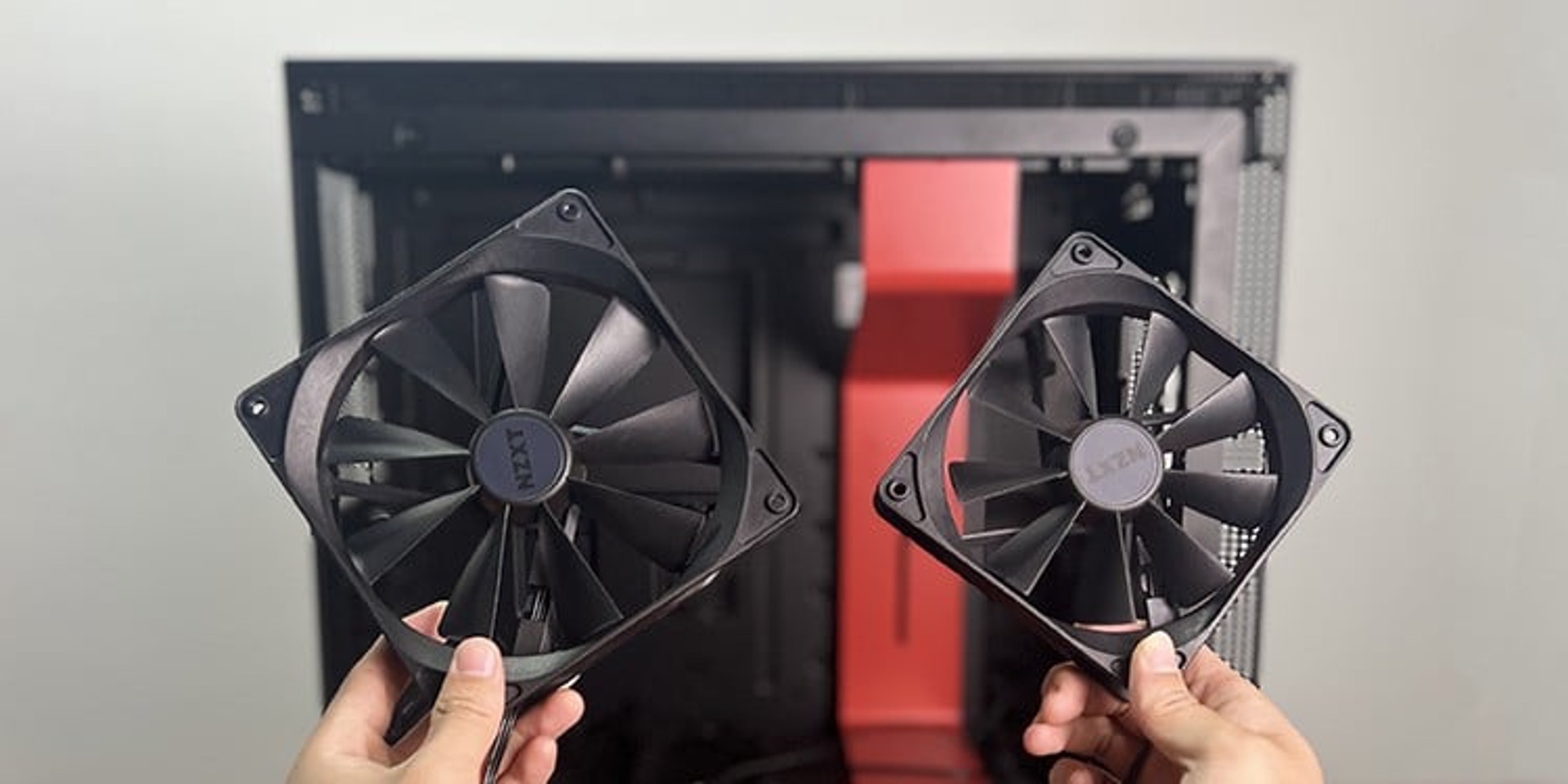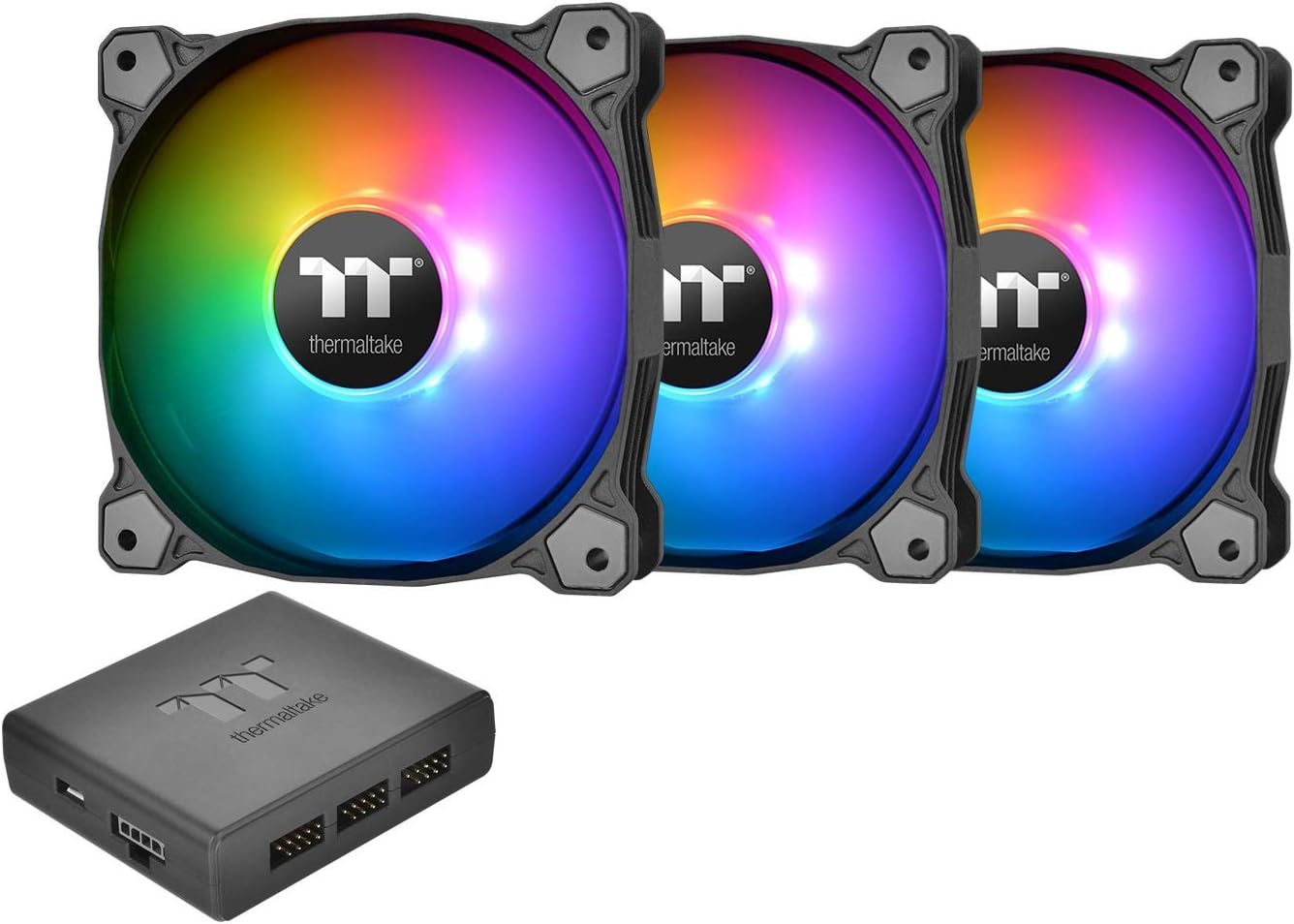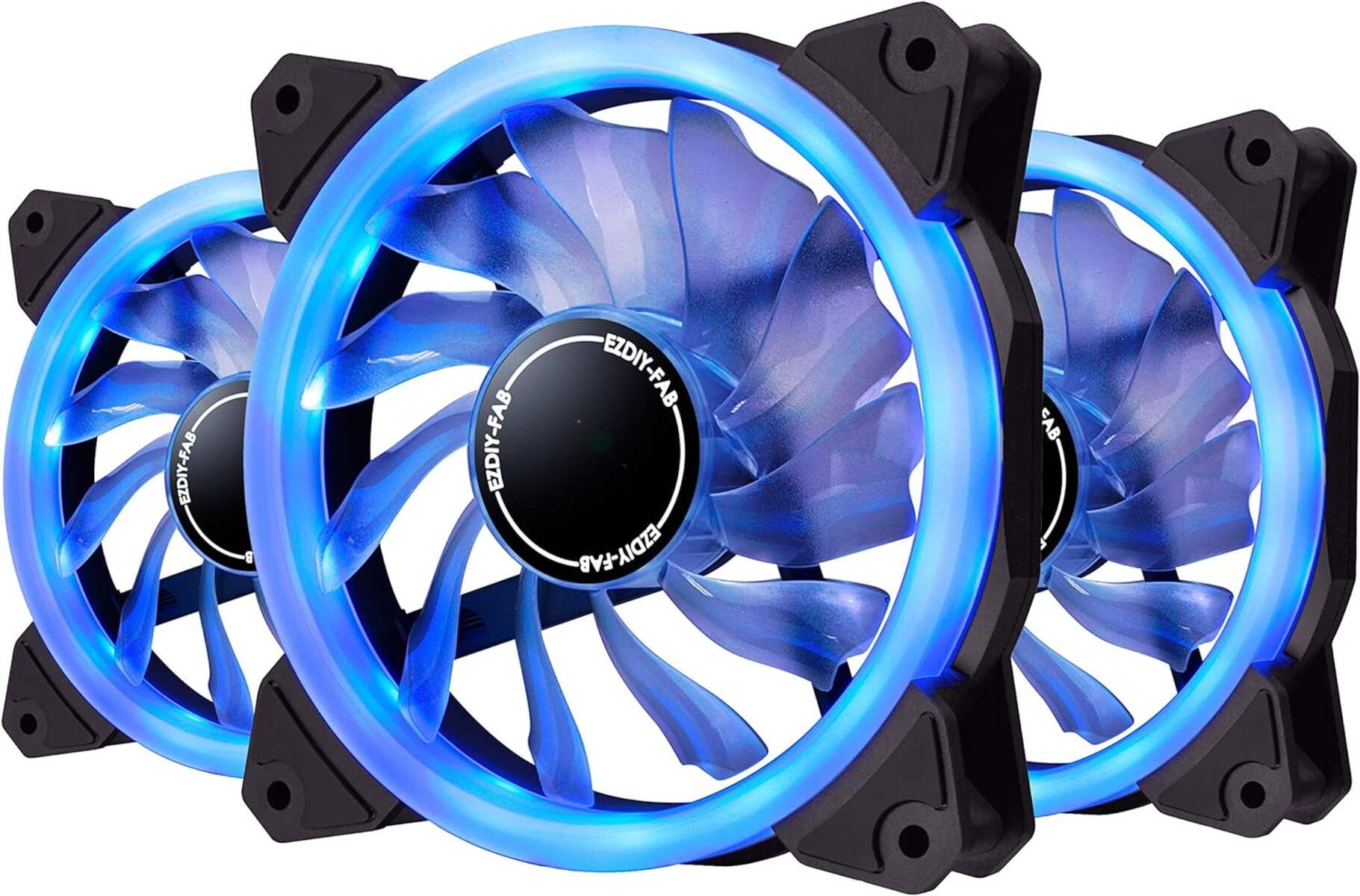Introduction
When it comes to keeping your computer cool and running efficiently, a 120mm case fan can be a valuable asset. Whether you are a gaming enthusiast, a professional graphic designer, or simply someone who spends a lot of time on their computer, the size of your case fan plays a crucial role in maintaining optimal performance.
But what exactly does “120mm” refer to? And how does it impact the cooling capacity of your computer? In this article, we will dive into the world of 120mm case fans, exploring their physical dimensions, benefits, ideal applications, installation process, and maintenance requirements. By the end, you’ll have a clear understanding of why a 120mm case fan is a popular choice among computer enthusiasts and professionals alike.
So, if you’re ready to unleash the power of efficient cooling technology, let’s embark on this journey to explore the wonders of a 120mm case fan.
What Does “120mm” Mean?
Before we delve into the details of a 120mm case fan, let’s first understand what the term “120mm” actually means. In the context of case fans, the measurement refers to the diameter of the fan’s blades.
Specifically, the “120mm” measurement signifies that the fan has a blade diameter of 120 millimeters, or approximately 4.72 inches. This size is one of the most commonly used in computer cooling systems, valued for its balance between airflow volume and physical dimensions.
It’s important to note that the size of a case fan impacts its performance and functionality. The larger the fan, the more air it can move, resulting in better cooling capabilities. On the other hand, smaller fans generate less airflow but can fit into compact computer cases more easily.
A 120mm case fan strikes a desirable balance between airflow capacity and size, making it a popular choice for various computer applications. Its moderate size allows it to fit into most standard computer cases while providing efficient cooling performance.
With a better understanding of what “120mm” represents, we can now explore the physical dimensions of a 120mm case fan, and understand how it contributes to an efficient cooling system for your computer.
Physical Dimensions of a 120mm Case Fan
Now that we know the meaning behind “120mm,” let’s take a closer look at the physical dimensions of a 120mm case fan. Understanding the size and specifications will help you determine if it is compatible with your computer case and cooling needs.
A standard 120mm case fan typically measures approximately 120mm x 120mm x 25mm. This measurement refers to the width, length, and thickness of the fan respectively. The 25mm thickness, also known as the depth, is a standard dimension for most case fans and ensures compatibility with various computer cases.
When considering the physical dimensions of a 120mm case fan, it’s important to note that there may be slight variations between different manufacturers or models. Some fans may have a slightly thicker or thinner profile, but the overall size should remain relatively consistent.
Additionally, the 120mm measurement relates specifically to the fan’s blade diameter, and not the overall size of the fan housing. The fan housing typically extends beyond the blade diameter, accommodating mounting screws or clips for easy installation.
Due to its compact size, a 120mm case fan can fit into most computer cases without any issues. It can be mounted on the front, back, or side panels of the case, depending on the specific design of the chassis and the desired airflow configuration.
Now that we have explored the physical dimensions of a 120mm case fan, let’s discover the benefits of using one in your computer setup, and why it’s a popular choice among PC enthusiasts and professionals.
Benefits of Using a 120mm Case Fan
Using a 120mm case fan in your computer setup offers a range of benefits that contribute to the overall performance and longevity of your system. Let’s explore some of the key advantages of incorporating a 120mm case fan into your cooling solution.
1. Efficient Cooling: A 120mm case fan is known for its excellent cooling capabilities. The larger blade diameter allows for a higher volume of airflow, leading to effective heat dissipation and preventing overheating. This is especially crucial for high-performance systems or those subject to heavy workloads such as gaming or video editing.
2. Low Noise Levels: Despite their powerful cooling abilities, 120mm case fans generally operate at relatively low noise levels. This is due to their larger size, allowing them to move air at lower RPMs (revolutions per minute), resulting in quieter operation. This is particularly beneficial for users who prioritize a quiet and peaceful computing experience.
3. Versatility and Compatibility: The 120mm size is widely supported by computer cases and cooling solutions, making it highly compatible with a variety of setups. Whether you have a compact case or a larger chassis, you can easily find a 120mm case fan that fits your needs without sacrificing performance.
4. Easy Installation: Installing a 120mm case fan is typically a straightforward process. Most fans come with mounting screws or clips, making them easy to attach to the desired location in your computer case. Additionally, many modern cases feature dedicated fan brackets or slots designed specifically for 120mm fans, further simplifying the installation process.
5. Improved Component Lifespan: By effectively cooling your computer components, a 120mm case fan helps prolong the lifespan and reliability of your hardware. Overheating can lead to reduced performance, system instability, and potentially permanent damage. With a 120mm case fan, you can ensure that your components are kept at optimal temperatures, promoting longevity and ensuring seamless operation.
These are just a few of the many benefits that come with using a 120mm case fan in your computer setup. Now that we understand the advantages, let’s explore some of the ideal applications for a 120mm case fan, helping you determine where it can best serve your cooling needs.
Ideal Applications for a 120mm Case Fan
A 120mm case fan is a versatile cooling solution that can be utilized in a variety of computer setups and applications. Let’s explore some of the ideal scenarios where a 120mm case fan shines:
1. Gaming Systems: Gaming PCs are often subjected to intense graphical processing and prolonged usage, resulting in increased heat generation. A 120mm case fan is perfect for maintaining optimal temperatures within the case, preventing thermal throttling and ensuring smooth gameplay.
2. Workstations: Professionals who work with resource-intensive tasks like video editing, 3D rendering, or graphic design require powerful hardware that generates significant heat. A 120mm case fan is an effective way to dissipate heat, enabling uninterrupted workflows and reducing the risk of hardware failures.
3. Media Centers: If you have a media center PC or a home theater setup with a compact case, a 120mm fan can provide essential cooling without taking up excessive space. Its smaller size allows it to fit comfortably in smaller cases without compromising on performance.
4. Overclocked Systems: Overclocking pushes the limits of your hardware, resulting in increased power consumption and heat generation. A 120mm case fan is a reliable cooling component to maintain stable temperatures in overclocked systems, ensuring optimal performance and preventing potential damage.
5. Silent Operation: If you prioritize a quiet computing experience, a 120mm case fan is an excellent choice. Its larger size allows for efficient cooling at lower RPMs, reducing noise levels while still ensuring effective heat dissipation.
6. General Purpose PCs: Even for everyday use or office computers, a 120mm case fan can make a noticeable difference in cooling efficiency. It helps maintain a stable operating temperature, keeping the system running smoothly and reducing the risk of hardware malfunction.
7. Compact Cases: Due to their moderate size, 120mm case fans are ideal for compact cases where space is limited. They can be easily mounted on the rear or side panels, improving airflow within the case and preventing overheating.
These are just a few examples of the many applications where a 120mm case fan can be invaluable. The versatility and functionality of a 120mm fan make it a popular choice among computer enthusiasts and professionals seeking efficient cooling solutions.
Now that we know the ideal applications for a 120mm case fan, let’s move on to the installation process and explore how you can incorporate this cooling component into your computer setup.
Installing a 120mm Case Fan
Installing a 120mm case fan is a straightforward process that can greatly enhance the cooling efficiency of your computer. Here is a step-by-step guide to help you through the installation process:
1. Gather the necessary tools: Before you begin, ensure you have the necessary tools on hand, such as a screwdriver and any additional mounting hardware that may have come with the fan.
2. Choose the mounting location: Determine the ideal location for your 120mm case fan. Common mounting spots include the rear or side panel of the computer case. Look for pre-drilled fan mounting holes or brackets designed for a 120mm fan.
3. Prepare the mounting area: If there are existing fan grills or obstructions, remove them from the chosen mounting area. This ensures optimal airflow and prevents any obstructions from interfering with the fan’s performance.
4. Attach the fan to the case: Line up the mounting holes on the fan with the corresponding holes on the case. Use the provided screws or clips to secure the fan in place. Ensure that the fan is tightly fastened to avoid any vibrations or movement during operation.
5. Connect the fan to the motherboard or power supply: Locate the fan header on your motherboard or the available power connectors from your power supply. Connect the fan’s power cable to the corresponding port, ensuring a secure connection. Some fans may utilize both a power connector and a separate connector for PWM (Pulse Width Modulation) control if applicable.
6. Cable management: Take the time to organize and secure the fan’s power cable to prevent any interference with other components or fans. Use cable ties or clips to keep the cables neatly routed and out of the way.
7. Test the installation: Power on your computer and ensure that the newly installed 120mm case fan is functioning properly. Check for any unusual noises or vibrations, and monitor the airflow to confirm that it is running smoothly.
By following these steps, you can easily install a 120mm case fan and improve the overall cooling performance of your computer. Now that your fan is up and running, let’s explore some tips for maintaining and cleaning it to ensure longevity and optimal performance.
Maintaining and Cleaning a 120mm Case Fan
Maintaining and cleaning your 120mm case fan is essential to keep it operating efficiently and prolong its lifespan. Here are some tips to help you effectively maintain and clean your fan:
1. Regular inspections: Periodically inspect your case fan for any signs of dust accumulation, physical damage, or unusual noises. This will allow you to identify any potential issues early on and take appropriate action.
2. Dust removal: Dust buildup can obstruct airflow and reduce the fan’s cooling efficiency. Use compressed air or an anti-static brush to gently remove dust from the fan blades, housing, and other components surrounding the fan. Ensure that your computer is powered off and unplugged before performing any cleaning.
3. Fan cleaning: If the fan blades are particularly dirty or sticky, you may need to remove the fan for a more thorough cleaning. Detach the fan from the case according to the manufacturer’s instructions and clean the blades with a mild, non-abrasive cleaning solution and a soft cloth. Make sure the fan is completely dry before reattaching it to the case.
4. Lubrication: Some 120mm case fans have bearings that require lubrication to maintain smooth operation. Refer to the manufacturer’s guidelines to determine if your fan requires lubrication and the recommended lubricant to use. Apply lubricant sparingly and according to the instructions provided.
5. Cable management and fan placement: Regularly check the routing and security of the fan’s power cable to avoid any interference with other components or fans. Additionally, ensure that the fan is properly positioned and oriented for optimal airflow within your case.
6. Monitor fan speed and performance: Use software monitoring tools or BIOS settings to keep an eye on your fan’s speed and performance. This will allow you to detect any abnormalities or decreases in airflow, indicating a potential issue that requires attention.
By following these maintenance and cleaning practices, you can keep your 120mm case fan in prime condition, ensuring efficient cooling and prolonging its overall lifespan.
With all this information at your disposal, you now have a comprehensive understanding of 120mm case fans, including their physical dimensions, benefits, ideal applications, installation process, and maintenance requirements. Incorporating a 120mm case fan into your computer setup can significantly improve cooling performance, protecting your hardware and enhancing the overall efficiency of your system.
Conclusion
120mm case fans are an integral part of maintaining optimal cooling performance in your computer setup. With their efficient airflow and versatile size, they offer significant benefits for a wide range of applications, from gaming systems to workstations and media centers.
Understanding the meaning behind “120mm” and the physical dimensions of a 120mm case fan allows you to make informed decisions when choosing the right cooling solution for your needs. Additionally, the numerous benefits, including efficient cooling, low noise levels, versatility, easy installation, and improved component lifespan, make 120mm case fans a popular choice among PC enthusiasts.
Installing a 120mm case fan is a straightforward process, and with proper maintenance and cleaning, you can ensure its longevity and optimal performance. Regular inspections, dust removal, fan cleaning, cable management, and monitoring fan speed contribute to keeping your case fan running smoothly.
By incorporating a 120mm case fan into your computer setup, you can enhance cooling efficiency, prevent overheating, and protect your valuable hardware. Whether you’re a passionate gamer, a professional graphic designer, or an everyday computer user, the benefits of a 120mm case fan are invaluable for maintaining the optimal performance of your system.
So, if you’re ready to take your computer’s cooling capabilities to the next level, consider investing in a high-quality 120mm case fan. Experience the benefits firsthand and enjoy a cooler and more efficient computing experience.







